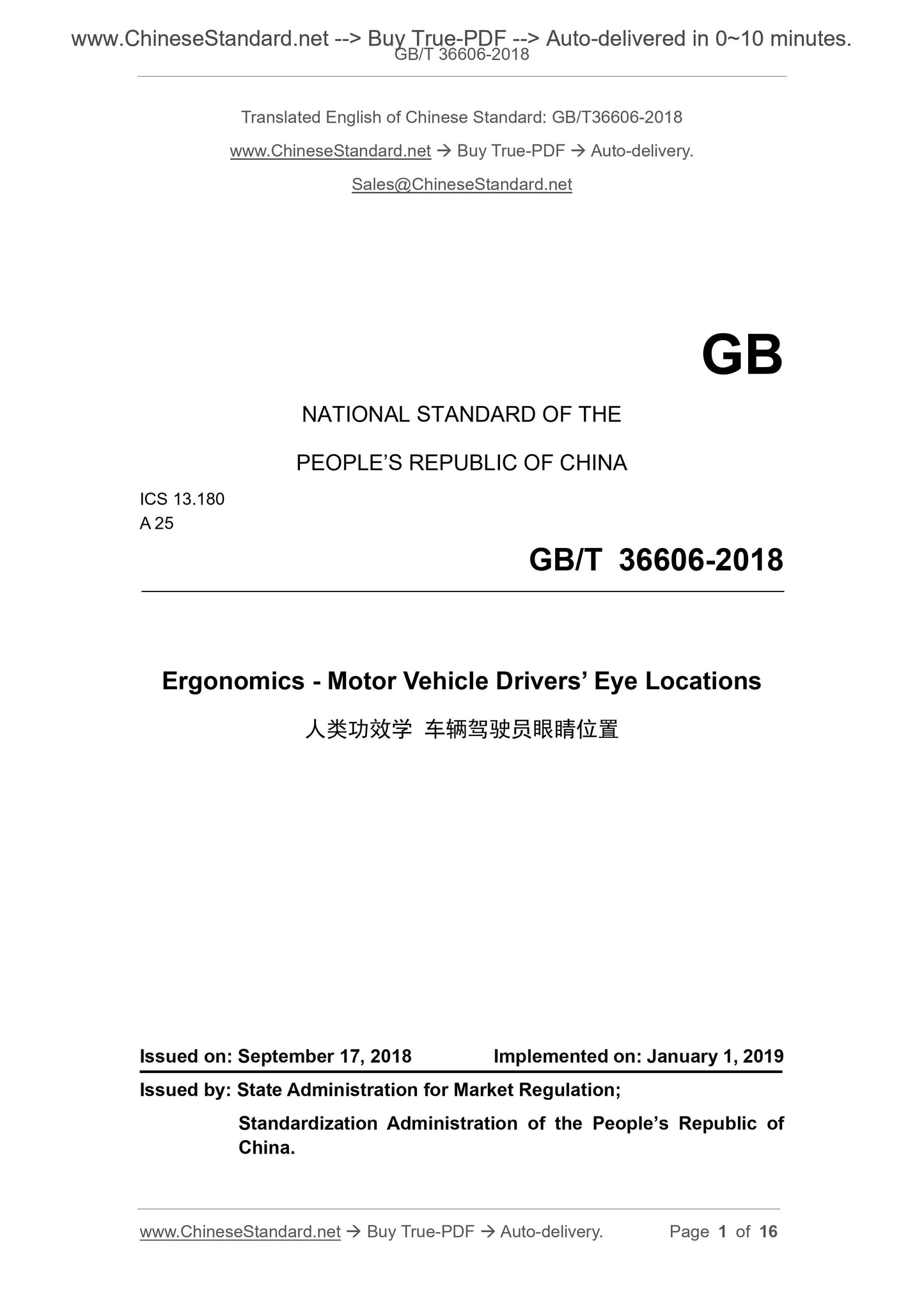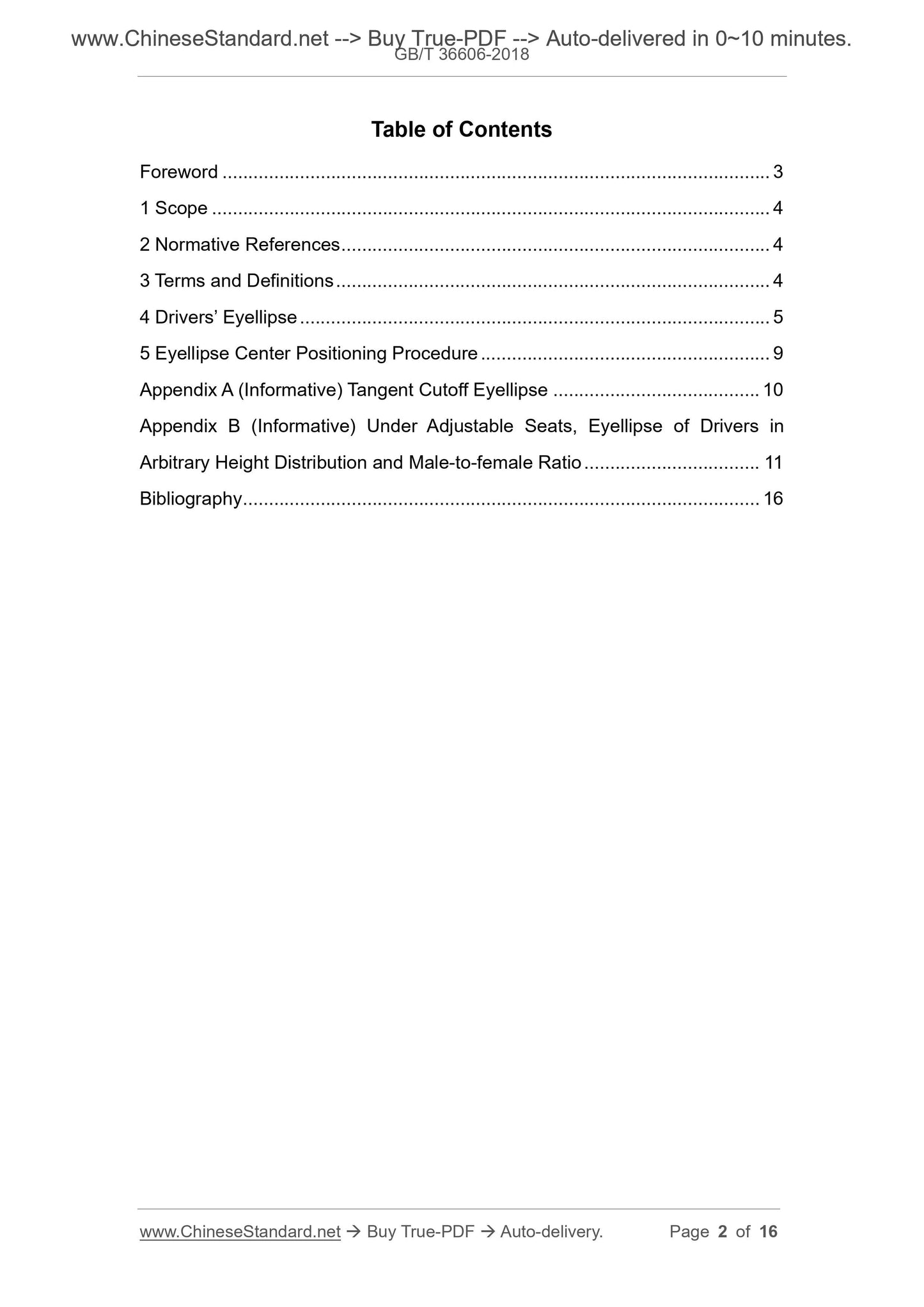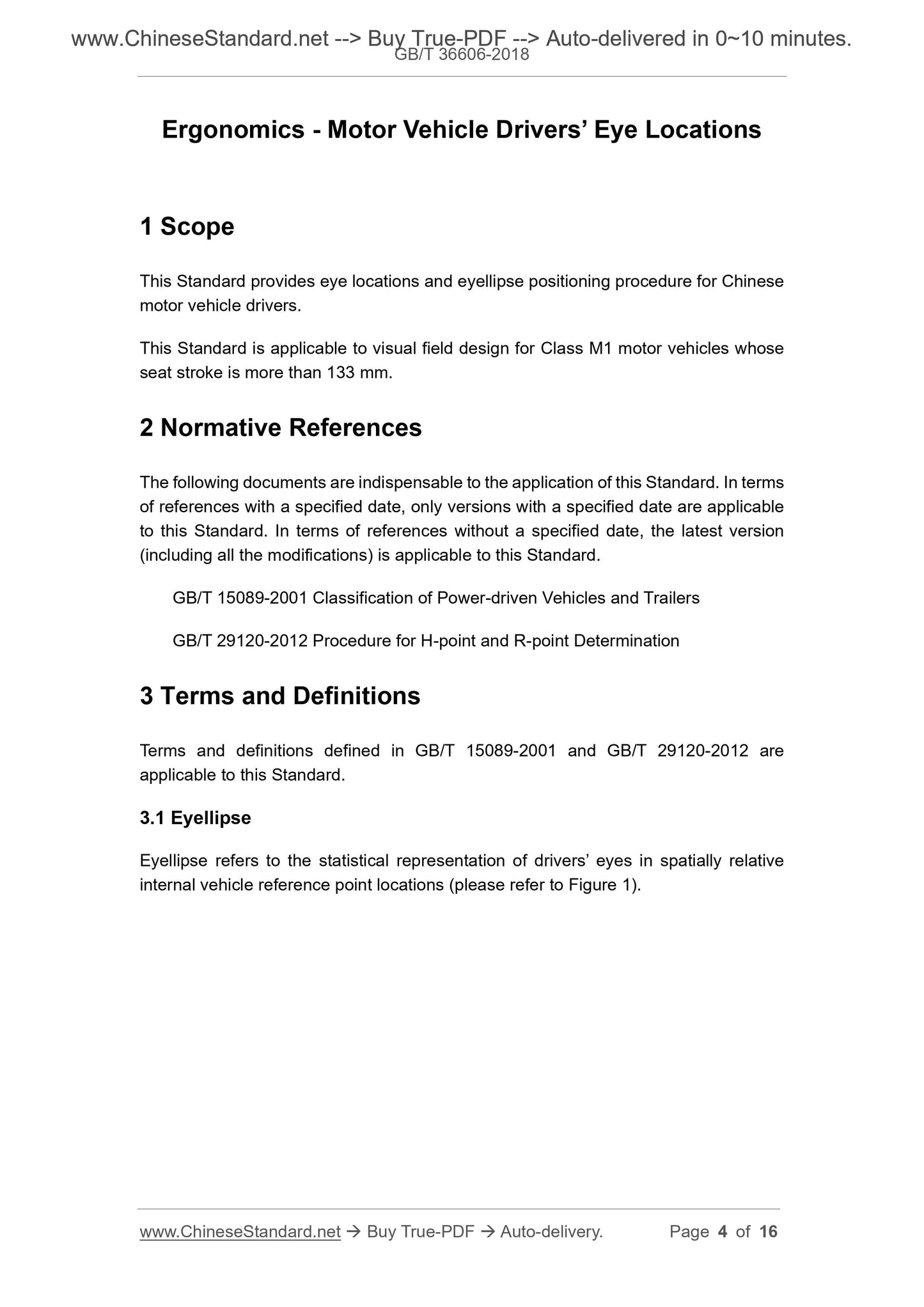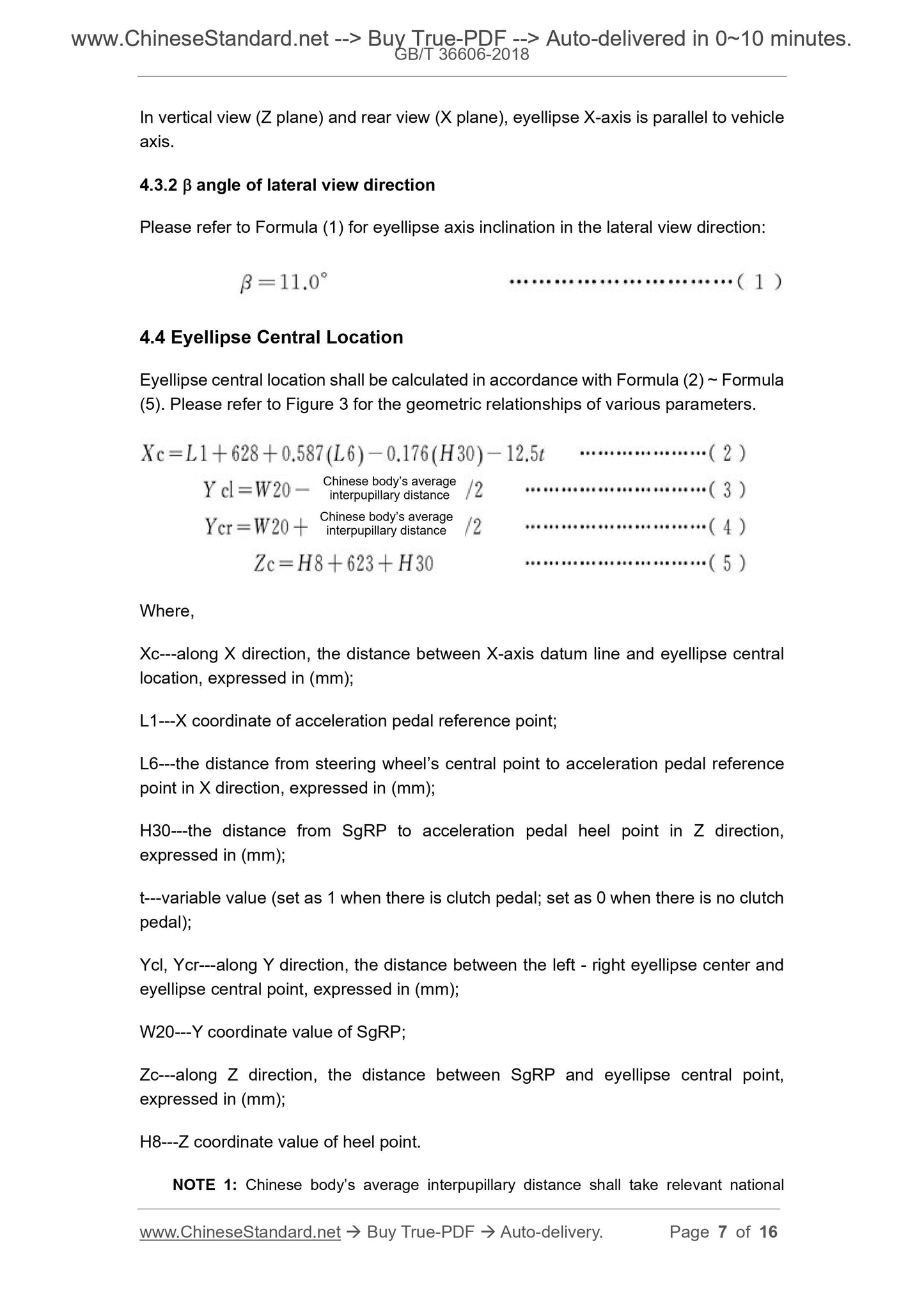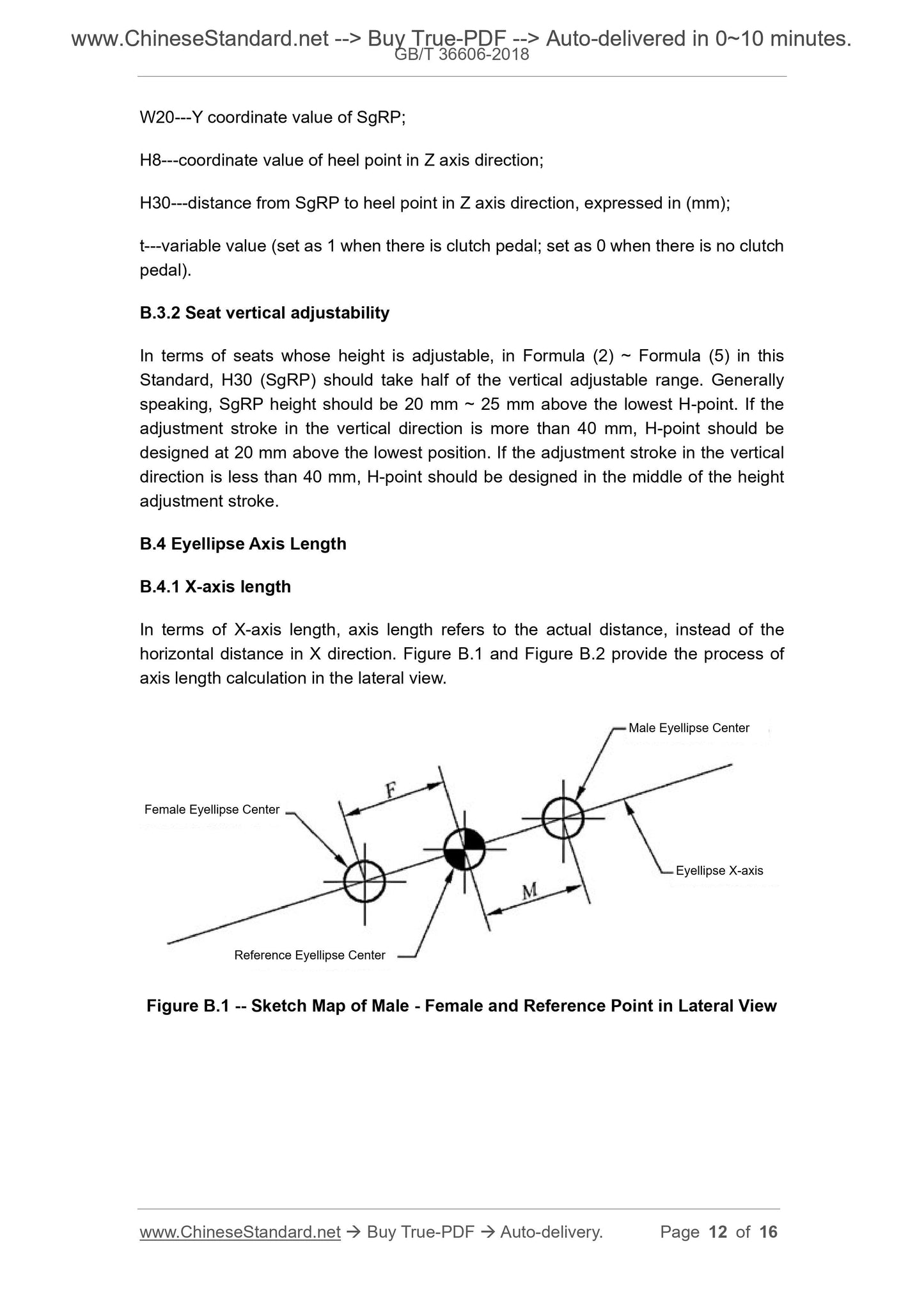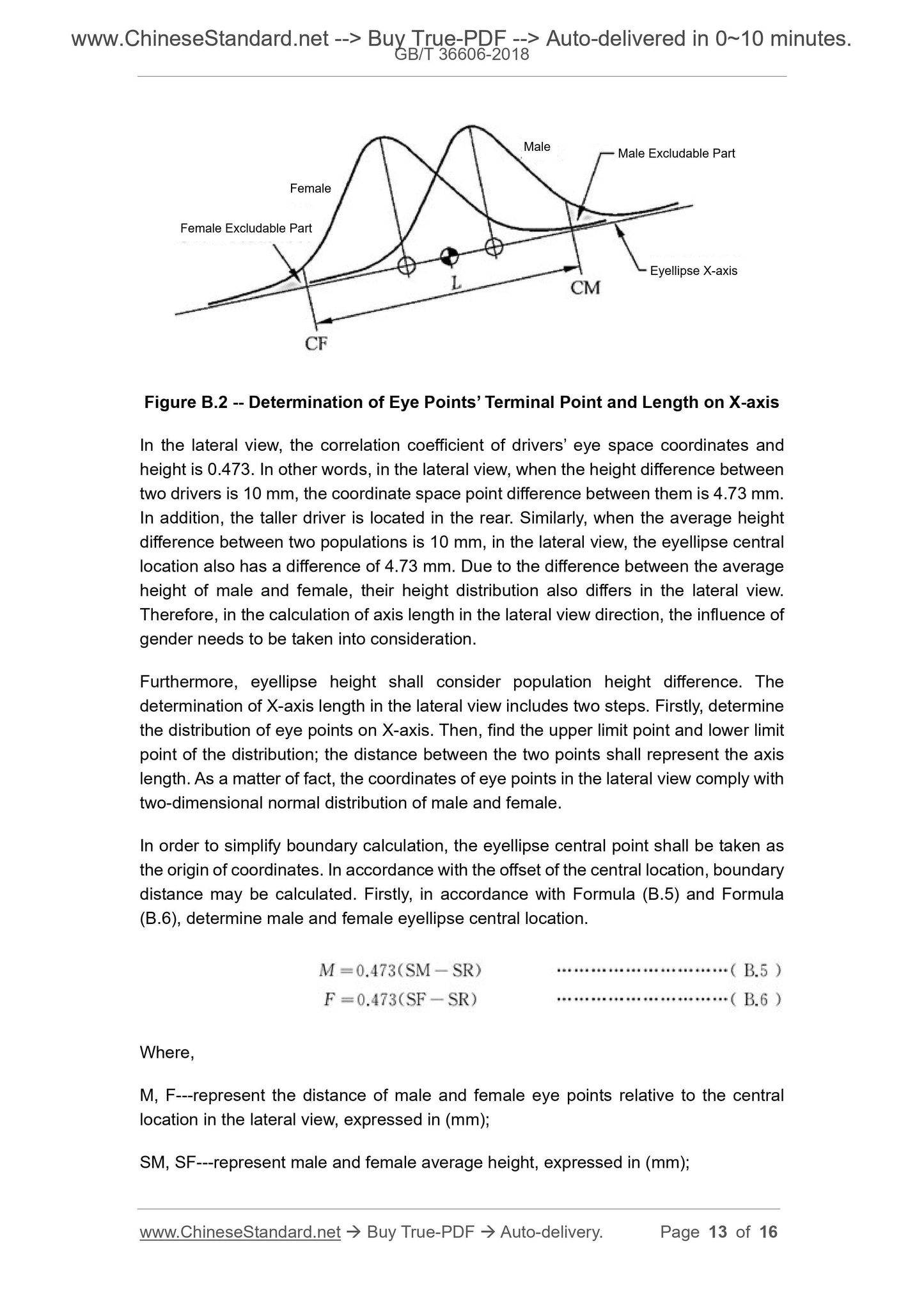1
/
of
6
www.ChineseStandard.us -- Field Test Asia Pte. Ltd.
GB/T 36606-2018 English PDF (GB/T36606-2018)
GB/T 36606-2018 English PDF (GB/T36606-2018)
Regular price
$150.00
Regular price
Sale price
$150.00
Unit price
/
per
Shipping calculated at checkout.
Couldn't load pickup availability
GB/T 36606-2018: Ergonomics - Motor Vehicle Drivers Eye Locations
Delivery: 9 seconds. Download (and Email) true-PDF + Invoice.Get Quotation: Click GB/T 36606-2018 (Self-service in 1-minute)
Newer / historical versions: GB/T 36606-2018
Preview True-PDF
Scope
This Standard provides eye locations and eyellipse positioning procedure for Chinesemotor vehicle drivers.
This Standard is applicable to visual field design for Class M1 motor vehicles whose
seat stroke is more than 133 mm.
Basic Data
| Standard ID | GB/T 36606-2018 (GB/T36606-2018) |
| Description (Translated English) | Ergonomics - Motor Vehicle Drivers Eye Locations |
| Sector / Industry | National Standard (Recommended) |
| Classification of Chinese Standard | A25 |
| Classification of International Standard | 13.180 |
| Word Count Estimation | 14,124 |
| Date of Issue | 2018-09-17 |
| Date of Implementation | 2019-01-01 |
| Issuing agency(ies) | State Administration for Market Regulation, China National Standardization Administration |
Share
